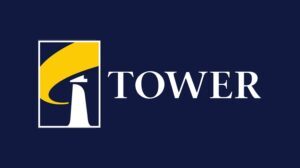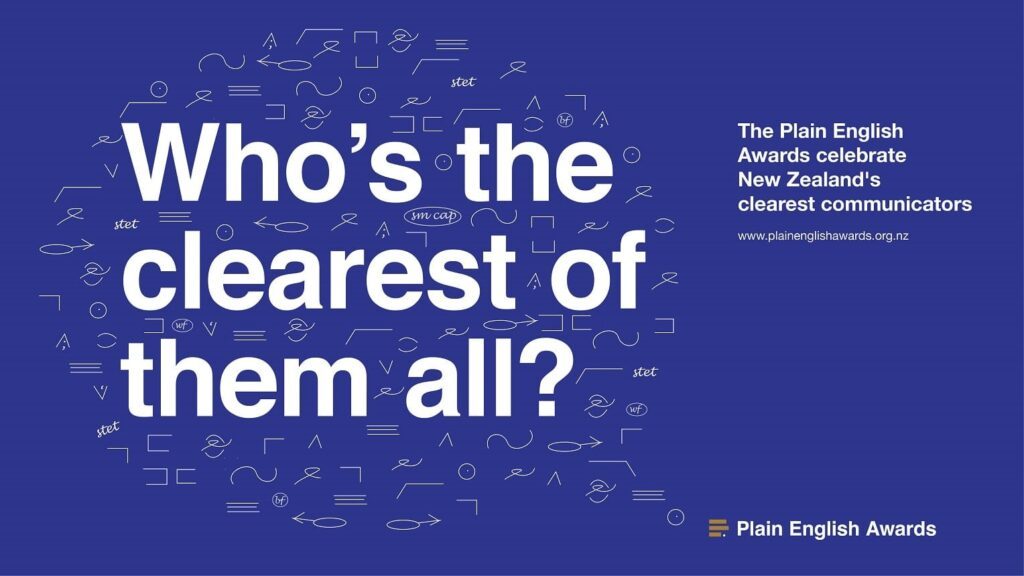WriteMark
Plain Language Standard
Why the WriteMark® matters more than ever in the age of AI writing

Photo by cottonbro studio / Pexels licence
One of our favourite plain language mottos adorns the wall in massive text at Write’s Wellington office. It’s from Sir Ernest Gowers’ book, Plain Words: ‘Be short, be simple, be human’.
It’s a motto that follows its own advice.
In the burgeoning age of ‘AI’ text generation, human writing for human readers is more important than ever. And that makes the WriteMark® an even more valuable symbol of people-centric plainness.
Here’s why a quality mark for clear communication matters even more in the age of AI.
People-centric writing stands out in an AI-generated torrent
The WriteMark® has always been a way to show your readers you care.
The heart-shaped symbol demonstrates your commitment to being clear, open, and customer-focused. It signals to your audience that you’ve gone the extra mile to ensure they understand what you’re telling them, which builds trust and confidence.
We think readers will particularly appreciate the WriteMark’s® quality promise as AI writing proliferates. AI-generated text risks ‘infecting’ AI training data — the library of information that AI tools use to create their responses. This may degrade the quality of AI outputs over time, as they reinforce and amplify their own distortions and biases. Commentators have called this an ‘AI ouroboros’
Read about the ouroboros on Medium’s website
In this uncertain future of AI writing, the WriteMark® will signify people-centric writing that gives readers confidence and helps to form human connections between author and audience.
Our human assessors give human insights
In a WriteMark® assessment, qualified experts read documents, assess them against 25 carefully selected criteria, and produce a report packed with insights and recommendations. They apply a critical eye, drawing on their experience and understanding — as both writers and readers — to identify what works and what needs work. This experience and insight helps to shape documents that serve their writers — and their readers.
AI can do some incredible things, if you know how best to use it. By drawing from untold libraries of human writing and thought, it can generate convincing text and images in the blink of an eye. It can educate and entertain, adapting its tone and language for any conceivable audience. But AI is not critical, creative, or insightful — not yet.
Big-picture elements require critical thought
AI can provide lots of helpful advice for some of the more mechanical aspects of plain language, like sentence structure and word choice. But humans can still do a few things better — like thinking.
‘Artificial intelligence’ is a bit of a misnomer, because tools like ChatGPT and DALL·E 3 are not thinking or creating. They draw on vast sets of training data from the web and use predictive patterns to spit out realistic answers to prompts.
This means AI would struggle to meet or assess some WriteMark® criteria, especially big-picture elements. It takes critical thought to determine whether a document has:
- a clear purpose
- an overall structure that helps readers to understand it
- answers to all the questions a reader is likely to ask.
AI is improving constantly, and quickly. But answering these questions requires critical analysis and holding the ‘big picture’ in mind — skills that today’s AI tools can only imitate.
AI can be a cultural liability
Our assessors have another advantage over AI tools — their Kiwi cultural context and sensitivity.
AI tools draw on training data from all corners of the internet. This means they tend to replicate and reinforce existing biases in that data. Aotearoa New Zealand represents a tiny corner of the internet, so our cultural differences are easily overwhelmed by American and European norms in AI’s predictive patterns.
Why does this matter? One element we assess for the WriteMark® is whether the document has an appropriate style and tone for its audience. Aotearoa’s cultural context is different from the rest of the world in lots of small ways — as well as the big ones, like the role of te reo and te ao Māori. The words we use and the way we express ourselves are distinct, as are our history, economy, politics, and culture.
AI tools are liable to get these small things wrong, because they draw from the wilderness of the World Wide Web. As well as setting the wrong ‘style and tone’ for our specific cultural context, relying on AI can lead to embarrassing and even offensive errors.
The WriteMark® Plus gives unrivalled insight into how readers experience a document
On top of using human experts to assess documents for the WriteMark, we get human non-experts to test how well a document serves its readers for the WriteMark® Plus.
User-testing with real readers always uncovers unforeseen sticking points. Human testers can help identify things like:
- whether a certain word choice or section is confusing
- whether a document’s structure matches readers’ expectations
- whether a document is accessible to readers of all abilities
- whether a document is practical to use in the real world.
AI is clever, and convincing. But there’s simply no substitute for testing a document with its target audience.
AI can be a powerful plain language tool — learn how to use it safely
While human expertise can’t be beaten when it comes to the high standard of the WriteMark, we still recognise the value of this powerful tool.
That’s why Write has added an Write smarter with AI workshop to our roster, and why we’re keeping up to date with advances in the field.
Check out our workshop, Write smarter with AI
Read our blog post about how to get the most from AI
Ryan Tippet February 12th, 2024
Posted In: Plain English, Plain language, Plain Language Awards, The WriteMark, WriteMark Plus
Tags: AI, AI Writing, clear communication, clear language, clear thinking, clear writing, plain language, power of plain language, Quality writing, the WriteMark, WriteMark, WriteMark Plus
Help! My appurtenance is on fire!

Avoid adding fuel to the fire with complicated communication. Image by Little Visuals. Pexels license.
When something catastrophic happens at home, you need to act fast. Can you imagine trying to get help like this?
“I need to undertake a disclosure with you. I’ll give you the full particulars. A bodily injury has occurred directly or indirectly. And I’m worried about the remediation. Can I priority request you and your apparatus be utilised to assist with the contamination damage?”
These convoluted phrases pepper real insurance documents. But when people need to understand what’s covered and how to make a claim, they need clear, accurate information that’s easy to navigate.
We’re thrilled that more insurance companies are taking this seriously.
Some companies are working hard on their legalese, rewriting dense, internally focused policies, forms, and letters so they are easy to read, easy to understand, and written for the reader rather than the writer.
And each year a few more make the WriteMark® grade.

Congratulations to Tower for achieving the Write Mark and becoming a plain language champion! Image by Tower Insurance.
Tower Insurance is on a mission
Tower Insurance is one of the latest. Tower’s recent commercials proudly proclaim that they now have the WriteMark® on 14 home, contents, and vehicle policies. Their campaign dismantles difficult words and shows the difference straightforward language can make.
Words for work, or words for wonder?
Tower’s image of the word ‘appurtenance’ exploding symbolises their mission to simplify insurance.
And it had us scratching our heads.
Because, even though our WriteMark® assessors include authors, linguists, editors, teachers, and all-round word nerds, many of us didn’t know what ‘appurtenance’ meant.
These are people who send emails headed ‘Noun string of the day’, and can spend half an hour discussing the subtle difference between ‘moved home recently’ or ‘recently moved home’. They savour the richness, elegance, and (let’s be honest) perverseness of the English language.
We can all appreciate that ‘appurtenance’ is a lovely-sounding word with a fascinating etymology.
First known use of appurtenant
14th century
History and etymology for appurtenant
Middle English apertenant, from Anglo-French appurtenant, present participle of apurtenir to belong — more at ‘appertain’
History and etymology for appertain
Middle English apperteinen, from Anglo-French apurtenir, from Late Latin appertinēre, from Latin ad- + pertinēre to belong — more at ‘pertain’
But we’re also citizens and policy holders, who need to find our way through important information, often under stress. In times like these we want clarity, not a linguistic lift. We want information where writers have put the effort in to help us make decisions and take action.

There’s a time for tea and poetry and a time for getting the information you need. Image by Suzy Hazelwood. Pexels license.
Excellence for effort and an effort for excellence
We know it’s not straightforward, and companies that have reached the WriteMark® Standard for some documents deserve recognition for their courage and commitment. And once one or two documents have met the Standard, it’s very easy to spot those that still need work.
Congratulations to Tower!
But what does ‘appurtenance’ mean?
In home insurance, an appurtenance is a piece of property associated with the main dwelling. For example, it includes the garden and trees, and other structures on the property such as garages, decks, and swimming pools. It also includes items that are in some way part of the house, such as air-conditioning units, furnaces, and septic systems.
— many of which could catch on fire!
Anne-Marie Chisnall October 29th, 2019
Posted In: The WriteMark, WriteMark Holders
Tags: clear language, clear thinking, clear writing, improved writing, industry standards, plain language, power of plain language, Quality writing, Tower Insurance, writing for the public
Clarity is the heart of the matter

Long roads can read to beautiful destinations.
Australia’s Budget Direct Insurance is always looking for ways to set itself apart from the competition. In 2017 the company identified the opportunity to improve the overall customer experience, by creating the easiest-to-understand Home and Contents Product Disclosure Statement (PDS) in the marketplace.
After a highly worthwhile journey — that took a little longer than expected — the new PDS was published this week. And it became the world’s first document carrying the heart with a tick — not just the prestigious WriteMark®, but the ultimate WriteMark® Plus.
What is the WriteMark® Plus?
When a document or website holds the WriteMark®, customers know that the writing meets a very high standard of clarity. Experts have evaluated the writing against rigorous criteria, emphasising the needs of the audience. The WriteMark® Plus includes testing the document with the intended audience.
Each journey begins with a single step
By mid-2018, Budget Direct had spent 12 months gathering information about the challenge ahead:
- analysing PDSs available to consumers
- running workshops with the business
- analysing their current document
- considering potential regulatory reforms.
Struggling to find good examples to follow, they extended their search. They saw that Tower in New Zealand had won an award in the Plain Language Awards. They phoned us to ask who did our type of work in Australia. ‘We do,’ we told them. Two of our consultants travelled to Brisbane to talk about Budget Direct’s vision for the document and how we could help.
The road is long, and good things take time
The project involved a lot more than a simple rewrite. For the change to be permanent, Write and the project team at Budget Direct needed to bring the rest of the organisation along with them.
Legal and compliance teams had to be satisfied that the changes reduced risk rather than introducing it. Systems and processes had to change with the new content. Every piece of content needed to be tracked through each stage of writing, review, editing, and testing.
Fortunately, Budget Direct took the time they needed to deliver the best result.
Difficult roads often lead to beautiful destinations
After lots of hard work, the Budget Direct PDS for the Home and Contents Policy is at last ready to take its place in the market. It’s now easy to read, understand, and act on. Insurance customers have endorsed the change. And the policy carries the WriteMark® Plus to confirm all that care has paid off.
Budget Direct told us at the start of the project that success is when customers say, ‘Wow! I didn’t know insurance could be this easy.’
‘Write made it easy. Customers now have a quality PDS that’s easy to read and understand. Our consultants love it because they can now have more informative conversations and deliver greater value to our customers.’
That was Write’s goal. That’s why we’re proud to have given Budget Direct a document with heart.
Check out Gusto, the wonderful designers who worked on the document.
Explore the design in Gusto’s portfolio of recent work
And you can view the whole document at the WriteMark® holders page.
Anne-Marie Chisnall September 13th, 2019
Posted In: WriteMark Plus
Tags: Budget Direct, clear language, clear thinking, clear writing, improved writing, industry standards, plain language, power of plain language, Quality writing, writing for the public
Win–win for writers and readers

Working together to bring clarity out of confusion. Image by Adi Goldstein. Unsplash licence.
What’s better than a ‘force for good’ advancing the quality of communication for everyday New Zealanders?
Two forces for good.
WriteMark® is the founding sponsor of New Zealand’s Plain English Awards — a celebration of clear communication and a public pat on the back for plain English champions.

Recognising the highest-quality communication
For 14 years WriteMark® has backed the Plain English Awards Trust to fund, organise, promote, host, and celebrate the annual Awards. The Awards recognise commitment to clear language on all scales — whether it’s across an organisation as a whole or down to a sentence that shines.
But it’s not just about wiping out the waffle. It’s about everyone’s right to take part in society. Information needs to be easy to read, understand, and act on — for all of us.
Making a real difference
The effect of WriteMark® joining forces with the Plain English Awards has been profound. Feedback has shown that the Awards:
- are highly valued by entrants, winners, judges, and sponsors
- offer a benchmark for organisations to assess their own performance
- have resulted in positive, meaningful change in communications for all New Zealanders
- can transform organisations — the process leading to success in the Awards has created widespread change for some organisations.
Working together for all
A piece of communication displaying the WriteMark®, or that has won a Plain English Award, shows the world that writers have thought carefully about their readers. And it shows readers that they can expect to easily understand and act on the information in front of them.
Now that’s a winning combination.
Anne-Marie Chisnall September 11th, 2019
Posted In: Plain English, Plain English Awards, WriteMark Holders
Tags: clear language, clear thinking, clear writing, improved writing, industry standards, plain language, power of plain language, Quality writing, writing for the public
Heart from the start — the story of the WriteMark®

If you’ve earned the WriteMark, you’re in good company. Image by Jon Tyson. Unsplash license.
It’s no coincidence that the WriteMark® logo is shaped like a heart. From a flicker of frustration in the late 90s to ‘the Oscars of plain language’ today, the notion of heart has pulsed through.
Heart in the sense of care and commitment to customers, and heart in the sense of backbone and determination.
In 1999, after almost 10 years helping people write better business documents, Write Group’s Lynda Harris felt a growing discontent.
‘I felt that we weren’t yet making enough of a difference.’
More talk than walk
With a few notable exceptions, we were still being asked to train groups of 12–14, rather than whole organisations. This meant that the effect of the training was often quickly undone by well-meaning managers. The pull of business-as-usual was strong.
‘A lot of our clients openly said they wrote in plain English, or had set that as an expectation, but in the thousands of business documents that passed through our hands each year, we saw very little in practice.’
A twin solution needed
It was crucial to get everyone to truly see what clear writing looked like, and to understand the profound effect it had on relationships and revenue.
Two things were needed: a clear standard of plain language and an easy way to show when something had met that standard.

A home-grown twin approach. Image by Jørgen Håland. Unsplash licence.
Crystal clear — but not over here
In 2000, Write began working with the UK-based Plain English Campaign and its badge of clarity — the Crystal Mark. The Crystal Mark showcased organisations that really cared about communicating clearly and openly. And it introduced both a quality standard and a way of recognising you’d met it.
But the UK-priced Crystal Mark proved too expensive for New Zealand businesses and didn’t feel relevant for our market. After 2 years, Lynda knew she had to try again with something just right for New Zealand.
WriteMark® sets the New Zealand standard
It took time, courage, and commitment, but by mid-2004 the idea for New Zealand’s homegrown WriteMark® had started coming to life.
‘We were a small, highly skilled company, passionate and dedicated to spreading the plain language message. If we were going to launch our own mark, it had to work.
‘We held focus groups in the public and private sectors and did extensive research into international plain language organisations. We set and refined the elements that make up the WriteMark® Standard, and set up a training and moderation process for assessors.
‘We based our fees as low as we could to encourage all New Zealand organisations to invest in plain English. We offered free WriteMark® assessments to organisations that had already advertised a commitment to plain English. They could immediately see the benefits of a standard-based assessment.’

From New Zealand to the world
On 1 March 2005, the WriteMark® launched, and it didn’t take long for businesses and government to take notice.
Over the years WriteMark®’s assessors have checked hundreds of documents against 28 criteria, and helped writers make changes where their documents don’t measure up.
The WriteMark® criteria reflect internationally recognised benchmarks for plain language and clear online communication. They include plain language, usability, suitability for the target audience, and design.
Although grown in New Zealand, the WriteMark® also distinguishes quality documents and websites overseas.
Recent recipients of the WriteMark® say the quality mark is the ultimate achievement for advocates of plain language. It reassures readers that something is clear, expert, and has reliable information that people can follow.
Achieving the WriteMark® shows your genuine care and consideration for customers, with a side effect of saving time and building trust.
User-testing a real plus
Today, holders of the WriteMark® can go even further to show they’re committed to excellent communication with customers. WriteMark® Plus combines an expert assessor view with insights from the people who matter.
A WriteMark® Plus quality mark shows that you’ve also rigorously tested your content on real people in your target audience
Using the power of words for good
For Lynda, it has always been about real people and using the power of words for good.
‘People can communicate their ideas and get the information they need. And ultimately it leads to a fairer, more respectful society.’
A society with heart.
Anne-Marie Chisnall September 10th, 2019
Posted In: Plain language, The WriteMark
Tags: clear language, clear thinking, clear writing, improved writing, industry standards, plain language, power of plain language, Quality writing, user-testing, WriteMark Plus, writing for the public